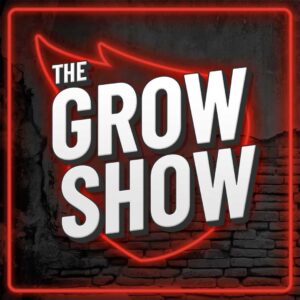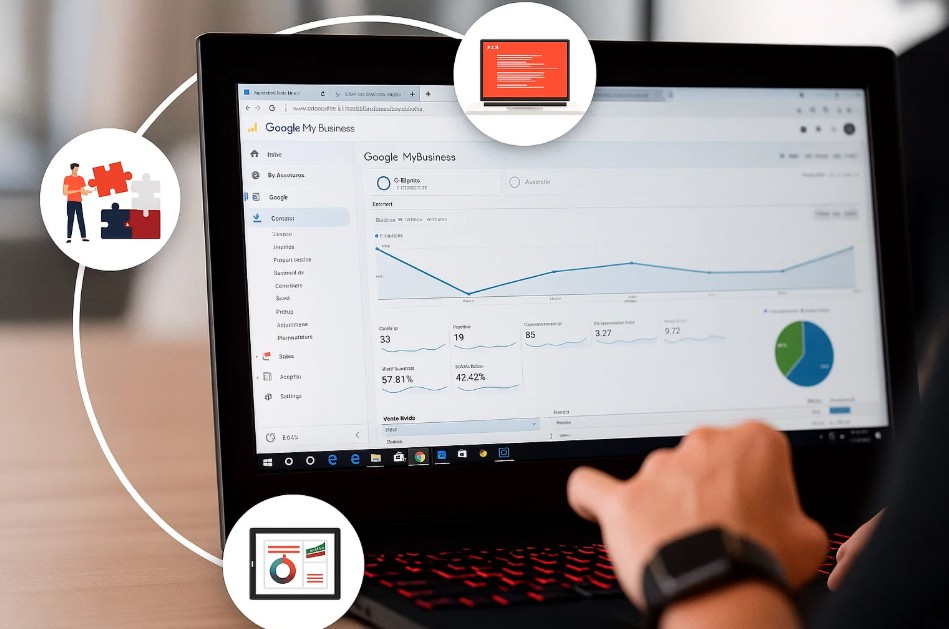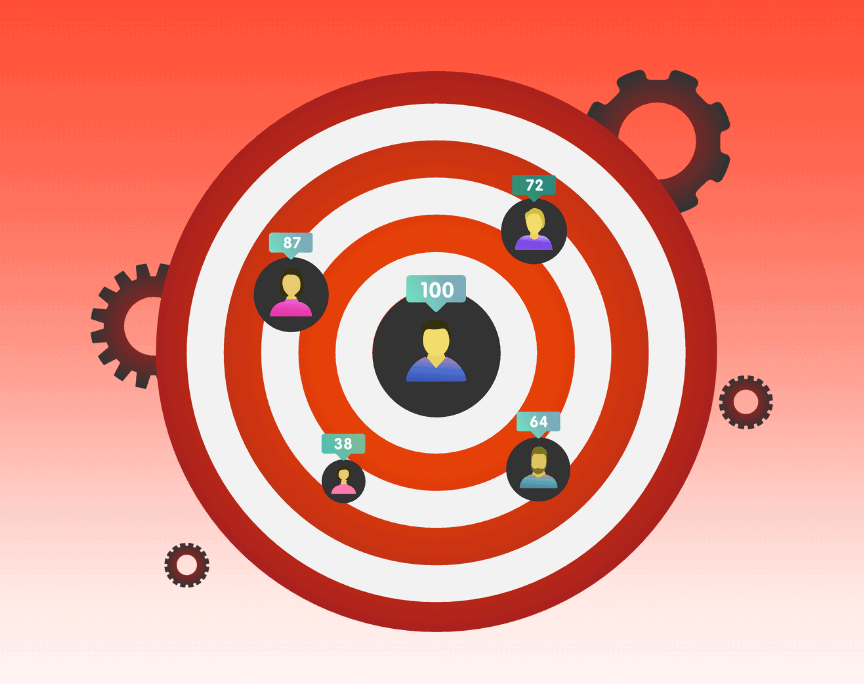In today’s B2B world, logistics companies cannot afford to rely solely on trade shows, cold calls, and referrals to drive growth. With the rise of remote buying behavior and digital-first research, platforms like LinkedIn have become powerful tools for reaching high-level decision-makers in the logistics and supply chain space.
If your goal is to get in front of Directors of Supply Chain, Logistics Managers, Procurement Officers, and COOs, LinkedIn is where they are active, engaged, and open to conversation—when approached the right way.
This article breaks down a strategic approach to LinkedIn lead gen for logistics companies. We will walk through targeting tactics, Sales Navigator workflows, messaging templates, and campaign execution that consistently deliver high-quality leads and booked meetings. Whether you are a freight broker, 3PL provider, warehouse operator, or transportation solution, this is your blueprint for using LinkedIn to build pipeline.
Contents
- 1 Why LinkedIn Works for Logistics Lead Generation
- 2 The Foundation: Using LinkedIn Sales Navigator
- 3 Building a Target List: Who to Connect With
- 4 Campaign Strategy: Connection, Value, Conversation
- 5 Messaging Templates for Logistics Outreach
- 6 Content Strategy to Support LinkedIn Outreach
- 7 Campaign Cadence: What to Send and When
- 8 Tracking Results and Optimizing Over Time
- 9 Tips to Maximize LinkedIn Lead Gen Results
- 10 When to Use LinkedIn vs Other Channels
- 11 The Future of Logistics Prospecting on LinkedIn
Why LinkedIn Works for Logistics Lead Generation
LinkedIn is more than a networking site. It is a live database of professionals, buyers, and decision-makers that updates in real time. For logistics providers, this means direct access to the people who control budgets, vendor lists, and freight decisions.
Benefits of using LinkedIn for logistics lead gen:
- Target with precision: Filter by job title, seniority, industry, location, and company size.
- Bypass gatekeepers: Message decision-makers directly without going through receptionists or assistants.
- Build credibility: Share insights, content, and social proof to establish authority before the first call.
- Stay visible: Prospects may not respond right away, but your profile and content keep you top of mind.
Most logistics companies underutilize LinkedIn. That means less competition and more opportunity for you to stand out.
The Foundation: Using LinkedIn Sales Navigator
To generate leads consistently on LinkedIn, you need more than a free account. LinkedIn Sales Navigator is the tool that turns LinkedIn from a networking platform into a sales pipeline engine.
Key features of Sales Navigator for logistics companies:
- Advanced search filters: Find supply chain leaders by job title, company headcount, industry, geography, and more.
- Lead lists: Save and organize high-priority targets.
- Account tracking: Monitor company changes, growth, and activity signals.
- CRM integration: Sync with Salesforce, HubSpot, or your CRM for seamless pipeline updates.
- Alerts and updates: Get notified when prospects change jobs, post updates, or engage with your content.
Sales Navigator ensures you are targeting the right buyers, at the right time, with the right message.
Building a Target List: Who to Connect With
Successful campaigns start with a clearly defined Ideal Customer Profile (ICP). Logistics services are not one-size-fits-all, and your outreach should reflect that.
Common ICP attributes for logistics LinkedIn campaigns:
- Industries: Manufacturing, retail, eCommerce, wholesale distribution, automotive, healthcare
- Company size: Mid-market and enterprise companies with $10M+ in revenue
- Regions: Areas where you offer freight or warehousing support
- Job titles:
- Director of Logistics
- VP of Supply Chain
- Procurement Manager
- COO or Operations Director
- Transportation Manager
- Buying triggers:
- Hiring supply chain roles
- Opening new distribution centers
- Recent funding or M&A activity
Use Sales Navigator to filter and build custom lead lists based on these attributes. This narrows your focus and increases the relevance of your outreach.
Campaign Strategy: Connection, Value, Conversation
The key to LinkedIn lead generation is not just who you target—it is how you engage them. B2B buyers are bombarded with messages. If you want to stand out, your approach needs to offer value, be personal, and open the door to a real conversation.
A three-step approach to effective LinkedIn lead gen:
- Connect
Start with a personalized connection request. Mention something relevant: company, industry, region, or a shared interest. - Provide value
After they connect, don’t pitch right away. Share an insight, ask a thoughtful question, or offer a useful resource. This builds trust. - Start a conversation
If there’s engagement, guide the conversation toward their challenges. Then introduce your solution. Focus on outcomes, not a hard sell.
Messaging Templates for Logistics Outreach
Here are proven LinkedIn message templates tailored for logistics lead gen. These can be adapted based on your audience and service offering.
Connection Request Template:
Hi [First Name],
I work with logistics teams in [industry/region] to help streamline freight and warehousing operations. Thought it would be great to connect and share insights—happy to be a resource.
Follow-up Message 1 (after connection):
Thanks for connecting, [First Name].
I noticed your team is active in [location/industry]. We recently helped a similar company reduce LTL freight costs by 18% through optimized carrier management.
Would you be open to a quick exchange to see if we might help your team hit similar goals?
Follow-up Message 2 (value add):
Just came across this guide on freight optimization trends—might be relevant to your work: [insert link or offer to share a PDF]
Curious—what’s your team’s biggest challenge right now in logistics or fulfillment?
Soft CTA Message:
If it makes sense, I’d be happy to share a few ideas based on what we’re seeing with other supply chain leaders.
Would a 15-minute call sometime next week work for you?
Content Strategy to Support LinkedIn Outreach
Even the best outreach can fall flat if your profile and content do not build trust. That is why LinkedIn lead gen should be supported by a simple content strategy.
Optimize your LinkedIn profile:
- Headline: Make it about your value, not just your job title.
Example: Helping supply chain leaders optimize freight and warehousing costs. - About section: Share who you help, what you do, and why it matters.
- Experience: List past logistics wins and relevant results.
- Banner image: Use a branded banner that visually supports your offering.
Content ideas to post weekly:
- Case studies and success stories
- Industry trends in shipping, warehousing, or transportation
- Logistics checklists or how-to guides
- Thoughtful questions that encourage conversation
- Team spotlights or behind-the-scenes content
You do not need to post daily. Two to three times per week with consistent value will support your outbound messages and improve connection acceptance rates.
Campaign Cadence: What to Send and When
A good LinkedIn lead generation campaign follows a defined sequence. Here is a basic 5-step cadence you can use over a two-week window.
| Day | Action |
| Day 1 | Send personalized connection request |
| Day 3 | Message 1: Introduction and brief value proposition |
| Day 6 | Message 2: Share resource or ask a question |
| Day 10 | Message 3: Soft CTA to book a call |
| Day 14 | Final message: Keep the door open for future conversation |
Do not push too hard. Stay professional, and if someone is not responsive, it is okay to move on. You can always re-engage later with new content or updated offers.
Tracking Results and Optimizing Over Time
LinkedIn campaigns should be tracked just like email or PPC. If you are not measuring performance, you will not know what to improve.
Key metrics to track:
- Connection request acceptance rate
Good campaigns average 30–50 percent. Personalization helps. - Response rate to messages
Aim for 15–25 percent. Relevance and tone make the difference. - Meetings booked per 100 connections
A typical target is 5–10 meetings per 100 new connections. - Engagement on profile and content
More engagement increases visibility and builds authority.
Use a CRM or LinkedIn tool like Salesloft, Outreach, or Zopto to manage cadences and track performance at scale. Sync data with your CRM to capture leads, notes, and outcomes.
Tips to Maximize LinkedIn Lead Gen Results
To improve performance and avoid common pitfalls, keep these tips in mind:
1. Focus on conversation, not conversion
Avoid jumping into a sales pitch. Ask smart questions and listen.
2. Personalize your outreach
Use job titles, company names, and pain points relevant to the prospect’s role.
3. Be consistent
LinkedIn lead generation works when it becomes a routine. Set weekly activity goals.
4. Align sales and marketing
Make sure your content, messaging, and campaigns support each other. Sales and marketing should collaborate, not compete.
5. Re-engage dormant leads
If someone did not respond six months ago, check back in. Situations change, and timing matters.
When to Use LinkedIn vs Other Channels
LinkedIn is one piece of your outbound strategy. Here’s when to prioritize LinkedIn over other lead gen methods:
Use LinkedIn when:
- You want to build relationships with high-level decision-makers
- Your sales cycle is longer and involves trust building
- You are targeting niche verticals or regional buyers
- You want to increase brand visibility and authority in your space
Combine LinkedIn with:
- Cold email: To follow up with connections or reach broader lists
- Phone outreach: To supplement LinkedIn activity and accelerate conversations
- PPC retargeting: To stay in front of people who visit your profile or landing page
The most successful logistics sales teams use LinkedIn as part of a multichannel outreach strategy—not a stand-alone tool.
The Future of Logistics Prospecting on LinkedIn
LinkedIn lead generation is quickly becoming a cornerstone of outbound success in the logistics space. As the industry continues to digitize and decision-makers become more selective with who they engage, authenticity and relevance are more important than ever.
Whether you’re reaching out to a VP of Supply Chain or a Director of Logistics, the difference-maker isn’t just in what you offer—it’s in how well you understand their needs before the conversation even begins.
By combining smart targeting with personalized messaging and consistent content, logistics companies can turn LinkedIn from a passive platform into a proactive sales tool. And as the digital buying journey evolves, those who build trust early—and often—will have a distinct competitive edge.
In this new era of logistics prospecting, success on LinkedIn won’t come from automation or shortcuts. It will come from clarity, strategy, and a commitment to helping the right people solve the right problems.

Madison Hendrix
Madison has worked in SEO and content writing at Abstrakt for over 5 years and has become a certified lead generation expert through her hours upon hours of research to identify the best possible strategies for companies to grow within our niche industry target audiences. An early adopter of AIO (A.I. Optimization) with many organic search accolades - she brings a unique level of expertise to Abstrakt providing helpful info to all of our core audiences.
- Madison Hendrix#molongui-disabled-link
- Madison Hendrix#molongui-disabled-link
- Madison Hendrix#molongui-disabled-link
- Madison Hendrix#molongui-disabled-link







